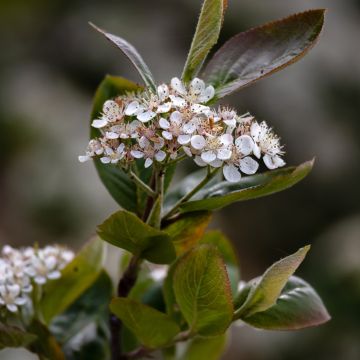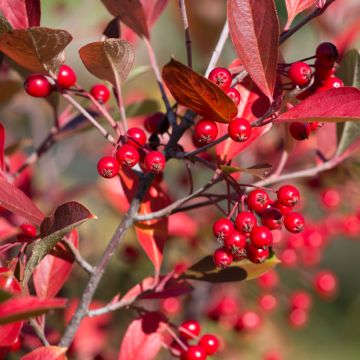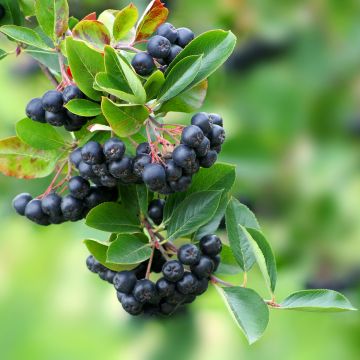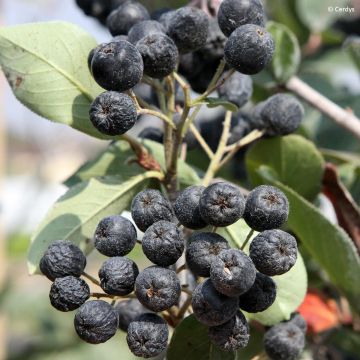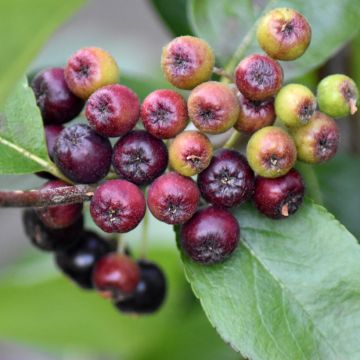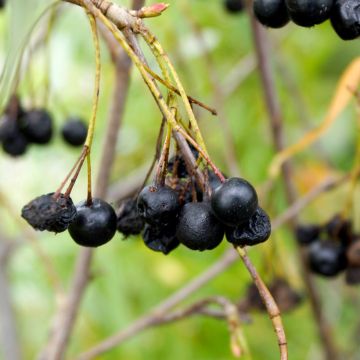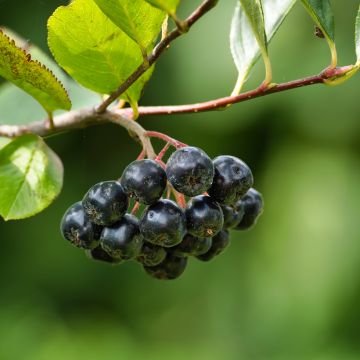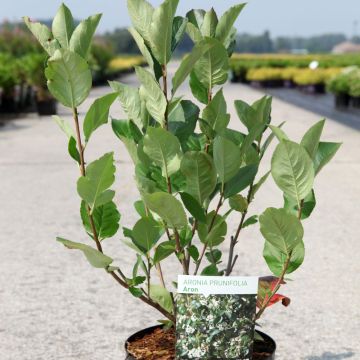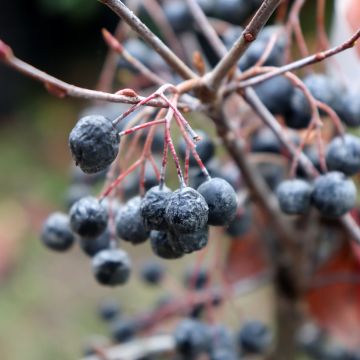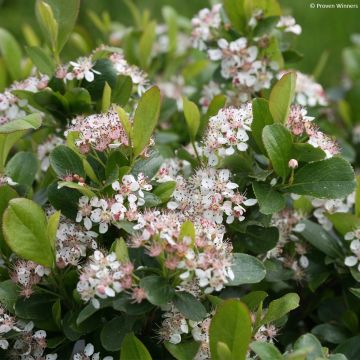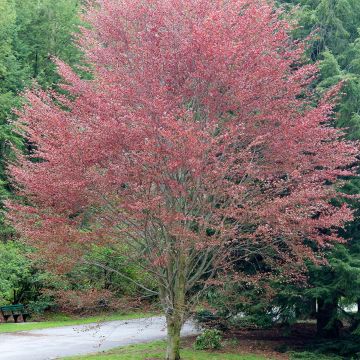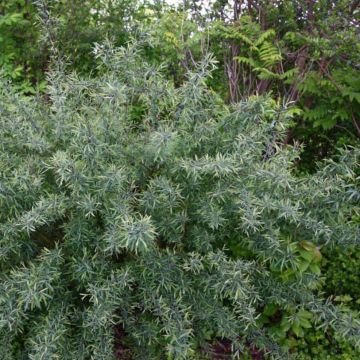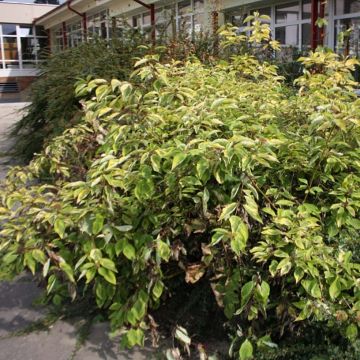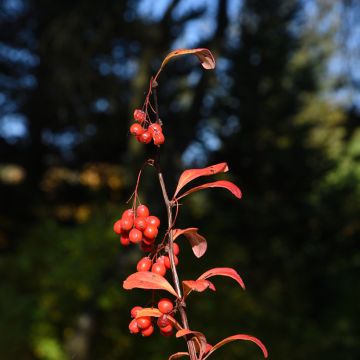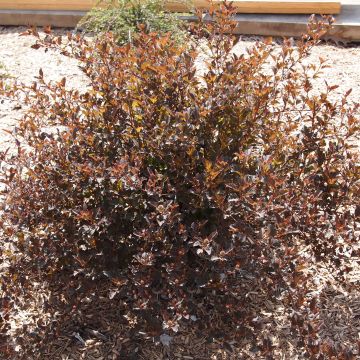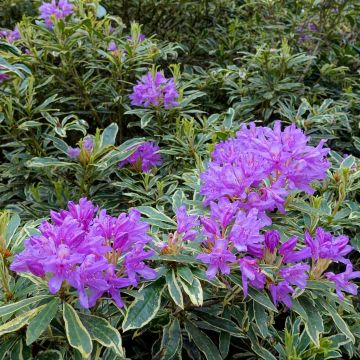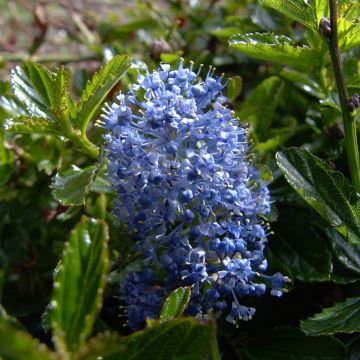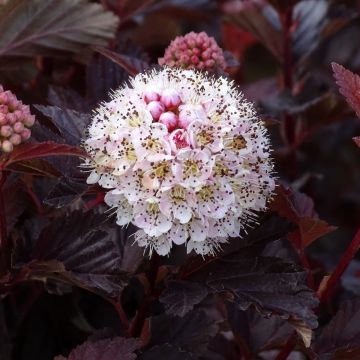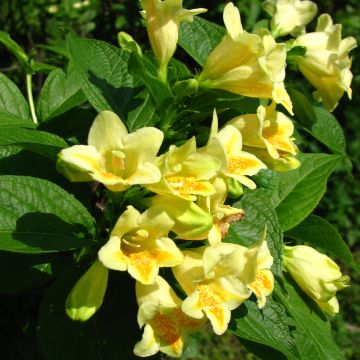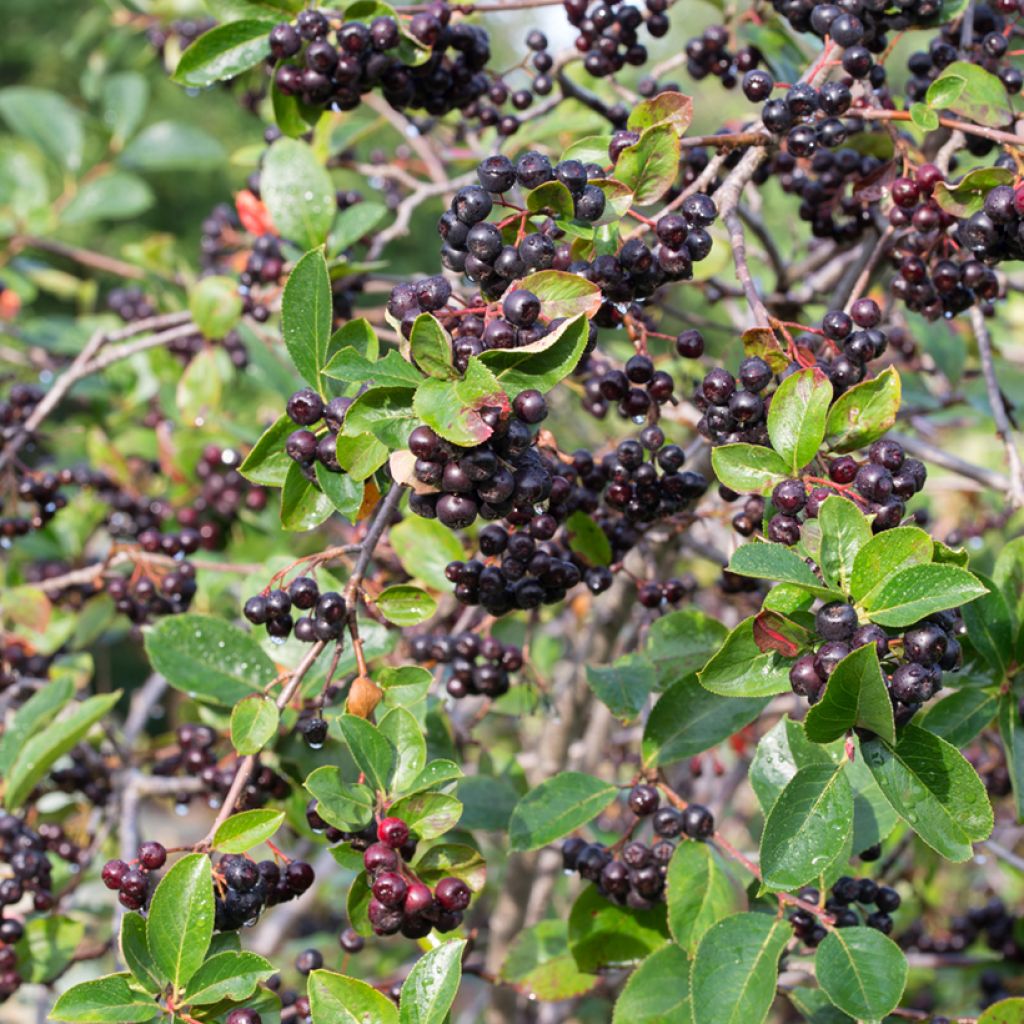

Aronia melanocarpa
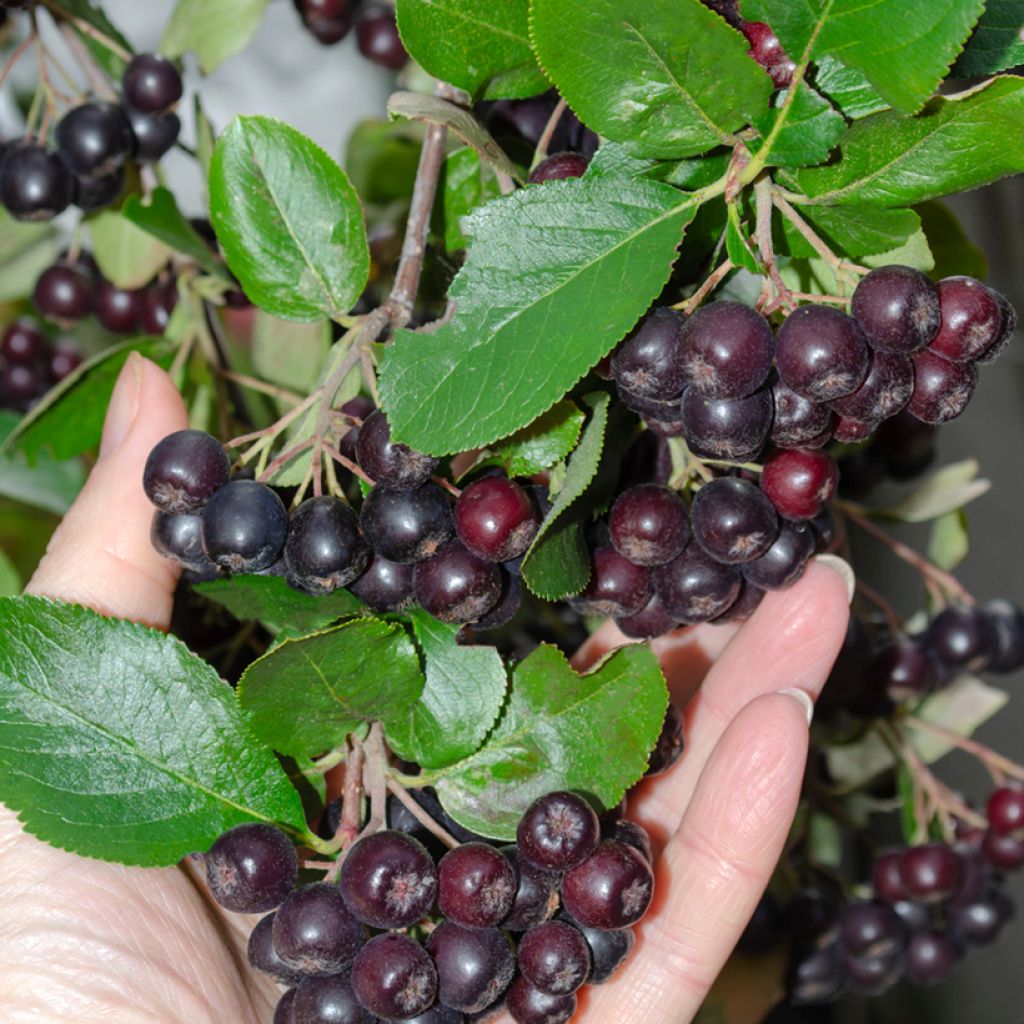

Aronia melanocarpa
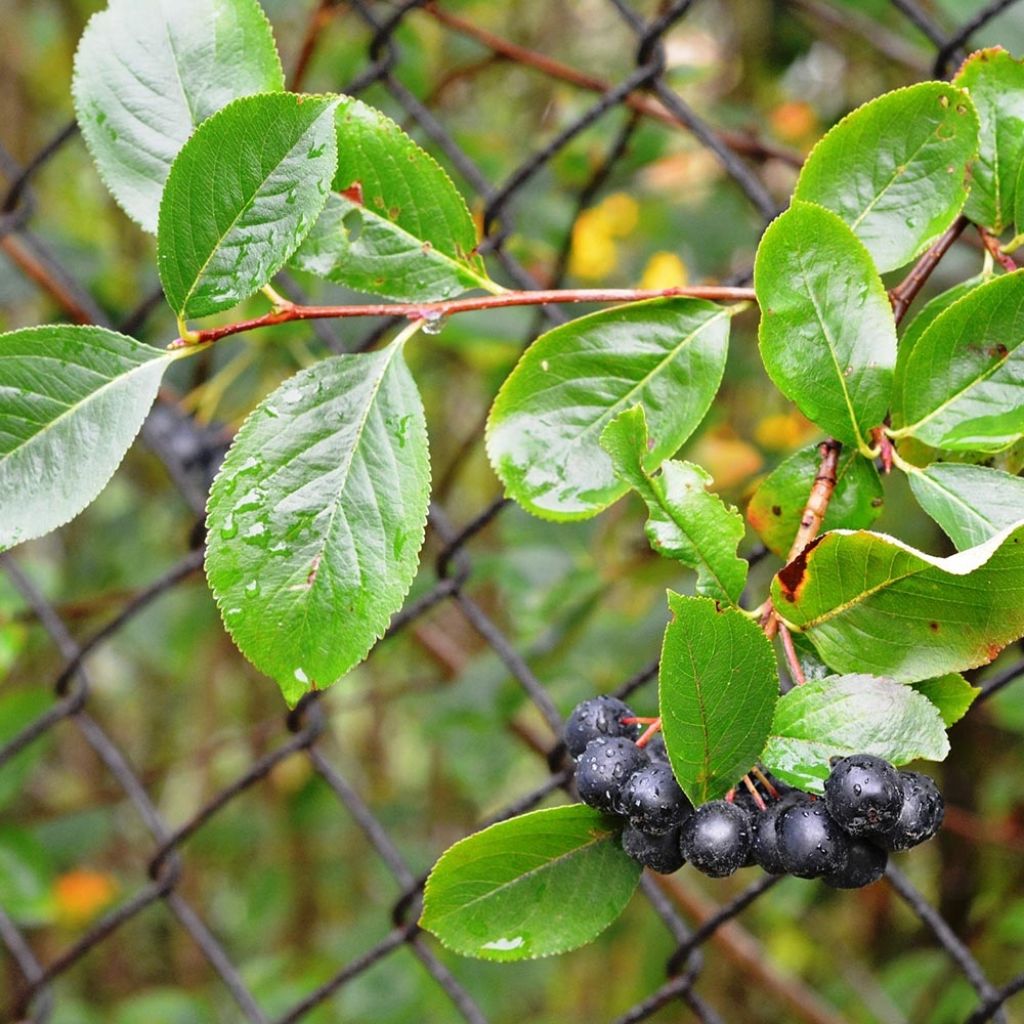

Aronia melanocarpa
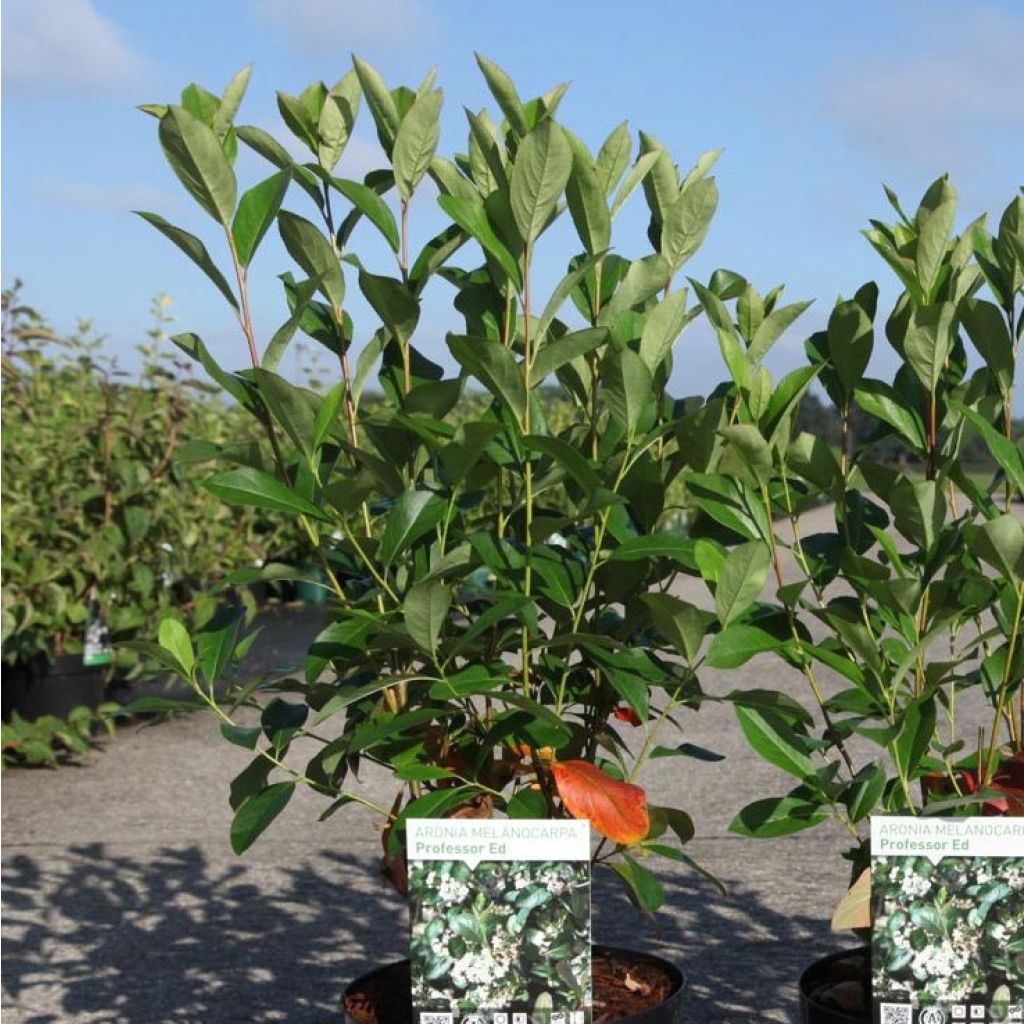

Aronia melanocarpa
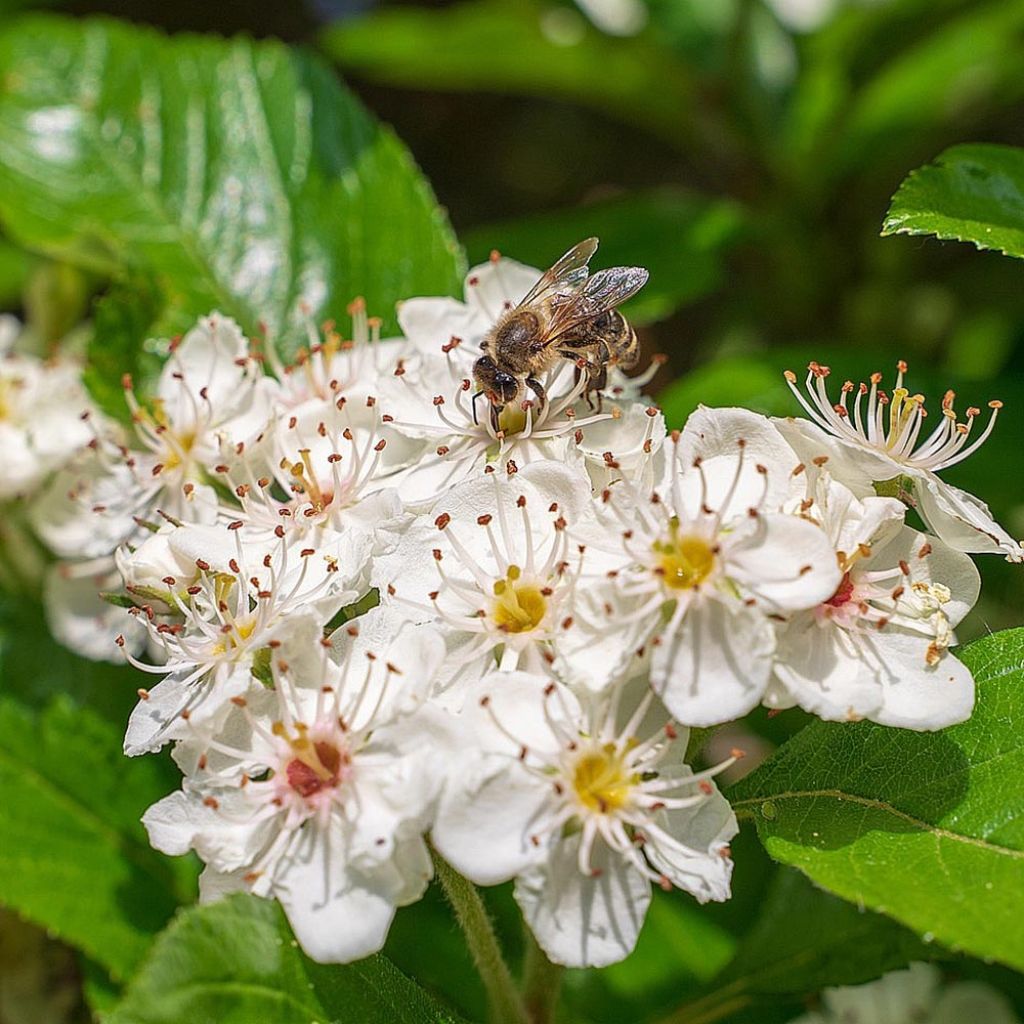

Aronia melanocarpa
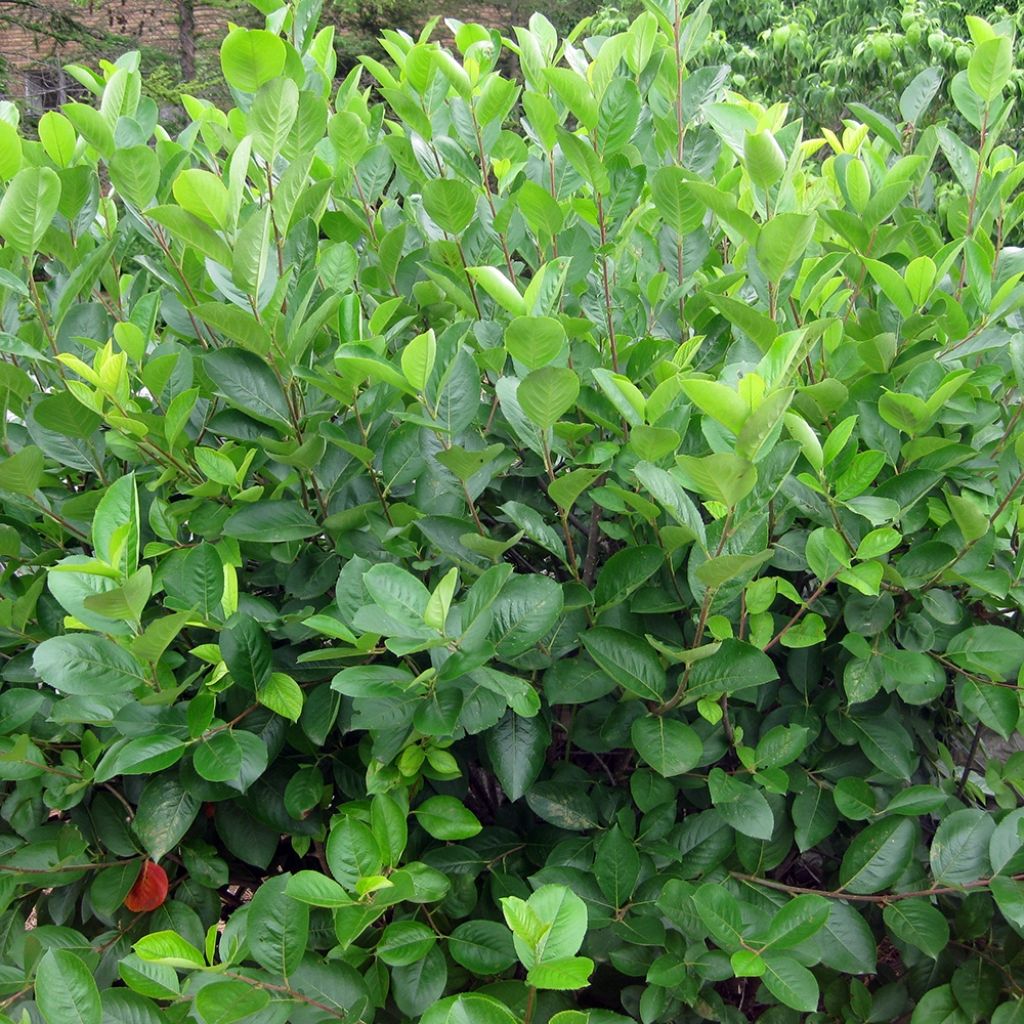

Aronia melanocarpa
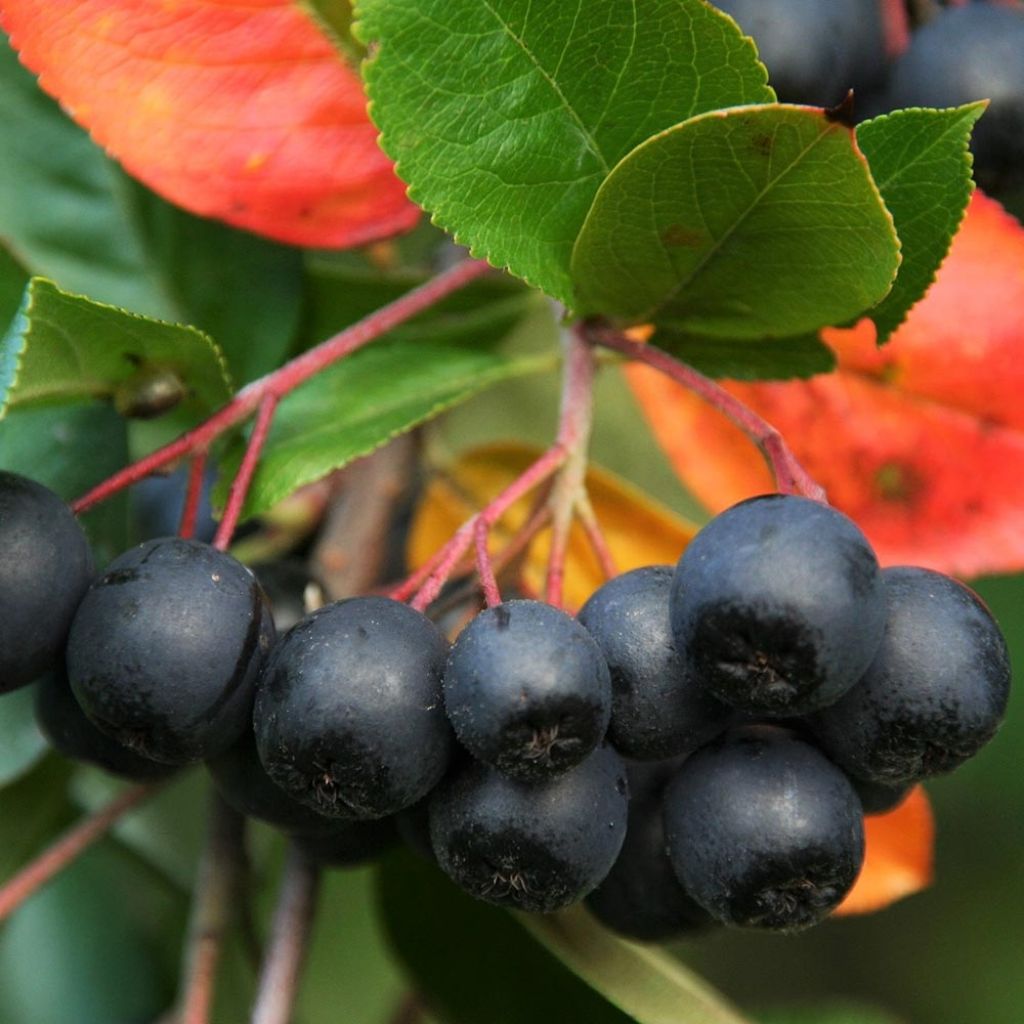

Aronia melanocarpa
Aronia melanocarpa
Aronia melanocarpa
Black Chokeberry, Black Berried Aronia
Why not try an alternative variety in stock?
View all →This plant carries a 24 months recovery warranty
More information
We guarantee the quality of our plants for a full growing cycle, and will replace at our expense any plant that fails to recover under normal climatic and planting conditions.
From €5.90 for pickup delivery and €6.90 for home delivery
Express home delivery from €8.90.

Does this plant fit my garden?
Set up your Plantfit profile →
Description
The Aronia melanocarpa, or black chokeberry, is a very hardy North-American bush. Its beautiful spring flowering in the form of white and fragrant clusters is followed by black, shiny, and edible berries with a slight taste of blackcurrant. It is at the end of the season that this chokeberry is most appreciated due to its festive attire: crowned with orange and reddish-purple, it is adorned with generous black clusters hanging from red petioles, highly coveted by birds. The bush is both ornamental and easy to grow in ordinary soil, in a sunny location to enhance its colours.
Coming from Canada and the northeastern United States, Aronia macrocarpa is a distant cousin of roses, plum trees, and brambles, a member of the vast rose family. This beautiful bush with a fairly spreading habit reaches between 1.50 and 2 m (4 ft 11 in and 6 ft 7 in) in height and 2.50 to 3 m (8 ft 2 in to 9 ft 10 in) in width. It has fairly slow growth with a dense vegetation. Its bark is smooth, reddish-brown. It bears deciduous, alternating, simple, ovate, finely indented leaves about 6 cm (2.4 in) long, with a satin dark green colour that turns truly fiery in autumn, adopting various shades of orange, copper, crimson red to purple. In April-May, white flowers speckled with pale pink, 2 cm (0.8 in) in diameter, appear. Gathered in corymbs, they are very numerous, fragrant and nectar-rich. They give way to clusters of round, green-purple berries, which become black-purple and shiny while their peduncles turn red. These edible berries have a slightly tart taste but are rich in antioxidants and last quite a long time in winter if not consumed by birds.
Naturally very resistant to diseases and pests, Aronia melanocarpa is an excellent free hedgerow bush, both hardy, ornamental, and undemanding. While it tolerates the presence of limestone and adapts to poor soils, it will only reach its full potential in fresh, deep, slightly acidic soil. It finds its place in isolation, in a natural, rural hedge as well as in large shrub borders. To achieve a spectacular mass effect, plant it in groups of 3 to 6 specimens. This chokeberry can be combined in a hedge that is both beautiful and delicious with other fruit-bearing shrubs, or blossom such as apple trees, plum trees, ornamental cherry trees, deciduous viburnums, hedge honeysuckles, witch hazel, Japanese Goumi, anemone trees, mayberries, sea buckthorn (Hyppophae rhamnoides), goji, and blueberry bushes.
Aronia berries can be consumed fresh, cooked, in jam, or as juice that can be mixed, for example, with cranberry juice and apple juice.
Report an error about the product description
Aronia melanocarpa in pictures
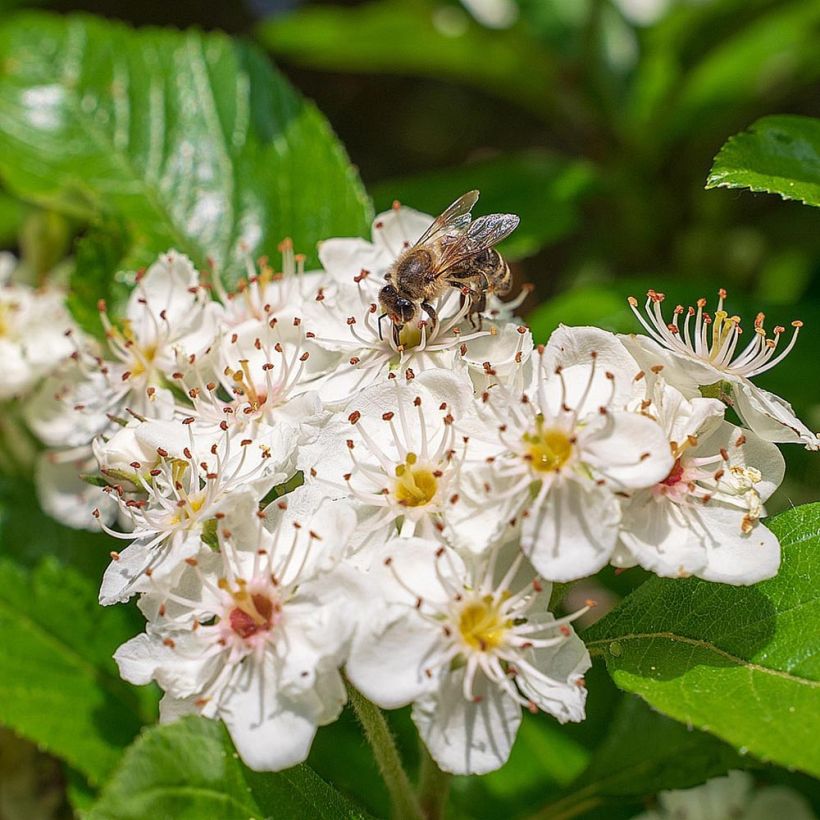

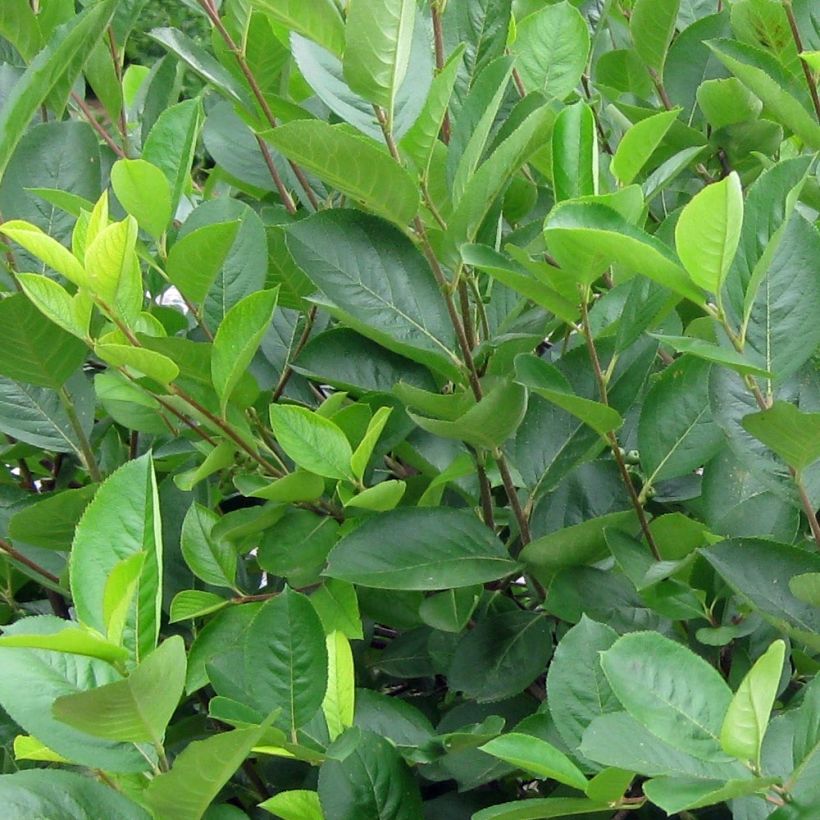

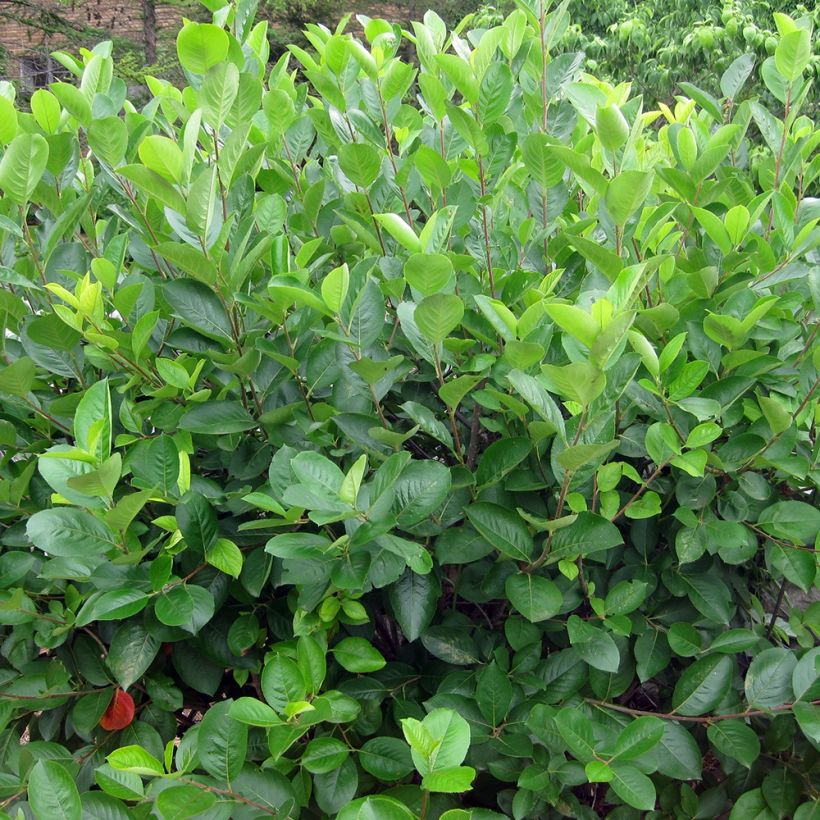



Plant habit
Flowering
Foliage
Botanical data
Aronia
melanocarpa
Rosaceae
Black Chokeberry, Black Berried Aronia
North America
Other Aronia
Planting and care
The Aronia melanocarpa is preferably planted in early spring or early autumn in any good garden soil. Although it is very tolerant, it prefers deep, moist, light, and slightly acidic soils. Plant it in a sunny but not scorching location, or in partial shade. In shade and in limestone soil, its colours will be more muted. The hardiness of this Canadian bush is excellent, even in wet soil. Mulch and water well. Prune all branches to half their length at the end of winter. It is naturally very resistant to diseases and parasitic pests.
Planting period
Intended location
Care
-
, onOrder confirmed
Reply from on Promesse de fleurs
Hedge shrubs
Haven't found what you were looking for?
Hardiness is the lowest winter temperature a plant can endure without suffering serious damage or even dying. However, hardiness is affected by location (a sheltered area, such as a patio), protection (winter cover) and soil type (hardiness is improved by well-drained soil).

Photo Sharing Terms & Conditions
In order to encourage gardeners to interact and share their experiences, Promesse de fleurs offers various media enabling content to be uploaded onto its Site - in particular via the ‘Photo sharing’ module.
The User agrees to refrain from:
- Posting any content that is illegal, prejudicial, insulting, racist, inciteful to hatred, revisionist, contrary to public decency, that infringes on privacy or on the privacy rights of third parties, in particular the publicity rights of persons and goods, intellectual property rights, or the right to privacy.
- Submitting content on behalf of a third party;
- Impersonate the identity of a third party and/or publish any personal information about a third party;
In general, the User undertakes to refrain from any unethical behaviour.
All Content (in particular text, comments, files, images, photos, videos, creative works, etc.), which may be subject to property or intellectual property rights, image or other private rights, shall remain the property of the User, subject to the limited rights granted by the terms of the licence granted by Promesse de fleurs as stated below. Users are at liberty to publish or not to publish such Content on the Site, notably via the ‘Photo Sharing’ facility, and accept that this Content shall be made public and freely accessible, notably on the Internet.
Users further acknowledge, undertake to have ,and guarantee that they hold all necessary rights and permissions to publish such material on the Site, in particular with regard to the legislation in force pertaining to any privacy, property, intellectual property, image, or contractual rights, or rights of any other nature. By publishing such Content on the Site, Users acknowledge accepting full liability as publishers of the Content within the meaning of the law, and grant Promesse de fleurs, free of charge, an inclusive, worldwide licence for the said Content for the entire duration of its publication, including all reproduction, representation, up/downloading, displaying, performing, transmission, and storage rights.
Users also grant permission for their name to be linked to the Content and accept that this link may not always be made available.
By engaging in posting material, Users consent to their Content becoming automatically accessible on the Internet, in particular on other sites and/or blogs and/or web pages of the Promesse de fleurs site, including in particular social pages and the Promesse de fleurs catalogue.
Users may secure the removal of entrusted content free of charge by issuing a simple request via our contact form.
The flowering period indicated on our website applies to countries and regions located in USDA zone 8 (France, the United Kingdom, Ireland, the Netherlands, etc.)
It will vary according to where you live:
- In zones 9 to 10 (Italy, Spain, Greece, etc.), flowering will occur about 2 to 4 weeks earlier.
- In zones 6 to 7 (Germany, Poland, Slovenia, and lower mountainous regions), flowering will be delayed by 2 to 3 weeks.
- In zone 5 (Central Europe, Scandinavia), blooming will be delayed by 3 to 5 weeks.
In temperate climates, pruning of spring-flowering shrubs (forsythia, spireas, etc.) should be done just after flowering.
Pruning of summer-flowering shrubs (Indian Lilac, Perovskia, etc.) can be done in winter or spring.
In cold regions as well as with frost-sensitive plants, avoid pruning too early when severe frosts may still occur.
The planting period indicated on our website applies to countries and regions located in USDA zone 8 (France, United Kingdom, Ireland, Netherlands).
It will vary according to where you live:
- In Mediterranean zones (Marseille, Madrid, Milan, etc.), autumn and winter are the best planting periods.
- In continental zones (Strasbourg, Munich, Vienna, etc.), delay planting by 2 to 3 weeks in spring and bring it forward by 2 to 4 weeks in autumn.
- In mountainous regions (the Alps, Pyrenees, Carpathians, etc.), it is best to plant in late spring (May-June) or late summer (August-September).
The harvesting period indicated on our website applies to countries and regions in USDA zone 8 (France, England, Ireland, the Netherlands).
In colder areas (Scandinavia, Poland, Austria...) fruit and vegetable harvests are likely to be delayed by 3-4 weeks.
In warmer areas (Italy, Spain, Greece, etc.), harvesting will probably take place earlier, depending on weather conditions.
The sowing periods indicated on our website apply to countries and regions within USDA Zone 8 (France, UK, Ireland, Netherlands).
In colder areas (Scandinavia, Poland, Austria...), delay any outdoor sowing by 3-4 weeks, or sow under glass.
In warmer climes (Italy, Spain, Greece, etc.), bring outdoor sowing forward by a few weeks.

































